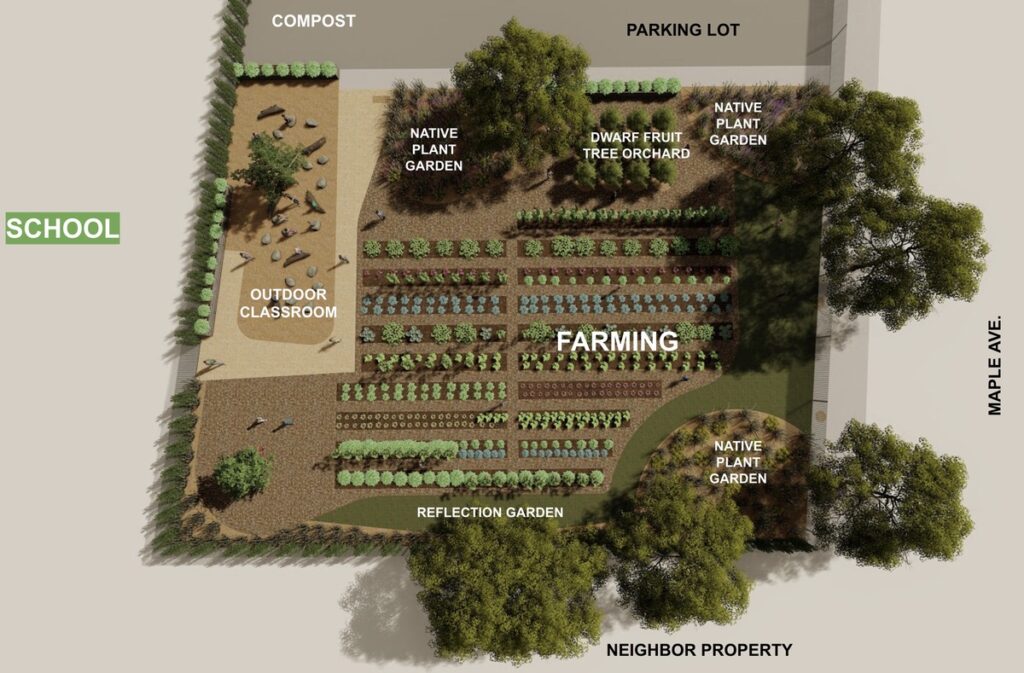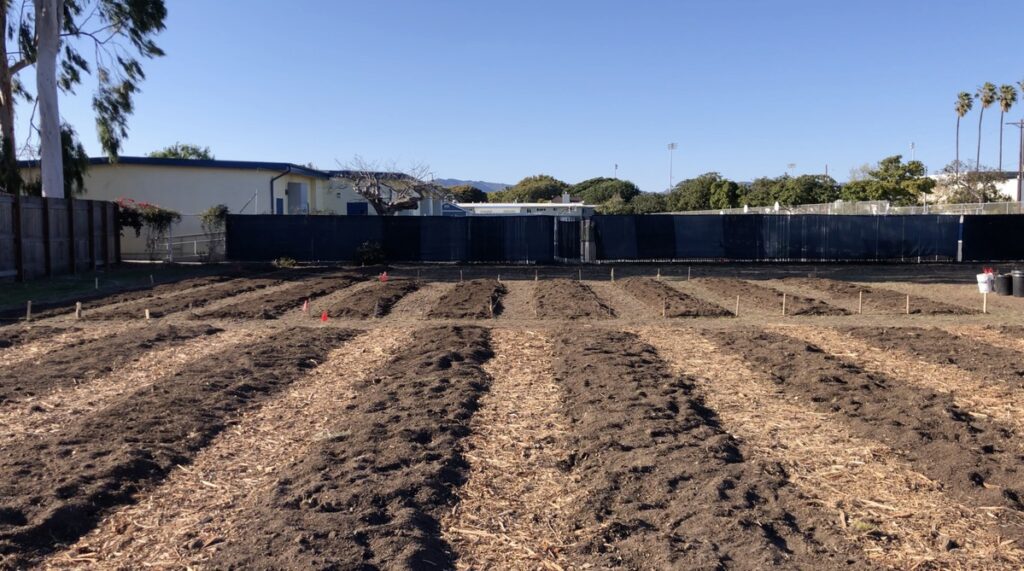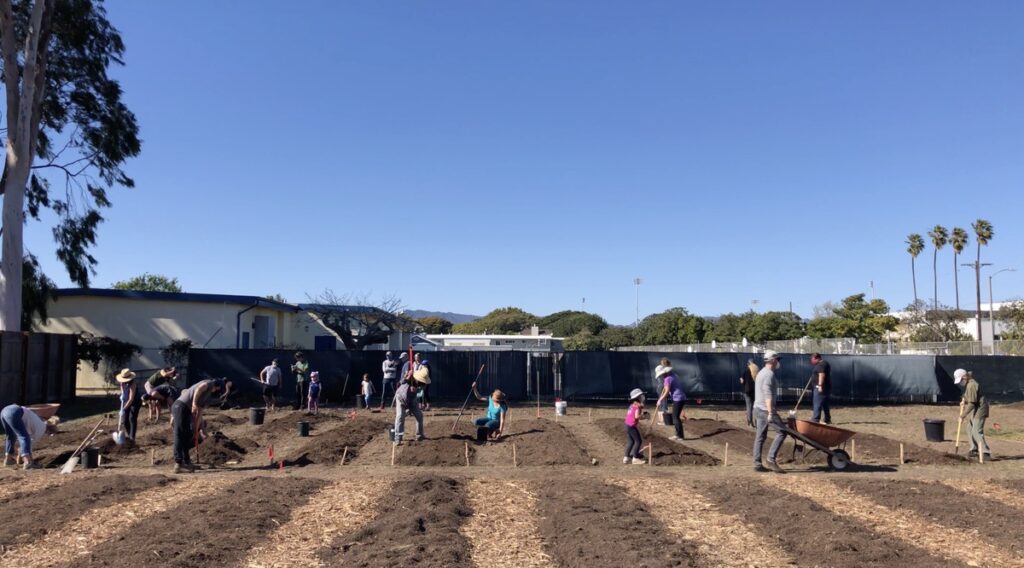
Last year, Will Rogers Community School came together to complete Mildred’s Garden, a project that was so successful it sparked the thought: what if students had access to more?
After months of sitting in front of a computer monitor unable to play on the sunny school fields, children, school principal Ryan Bourke and local educators will soon have the answer thanks to the dozens of volunteers who have transformed a half-acre piece of property on the school’s campus into the early stages of a regenerative food forest.
“I have a highly functioning team of parents who are all into volunteering, organic and regenerative agriculture, teaching kids about the importance of being good stewards of the land, environmentalism and all that kind of stuff. And, last year, pre-COVID, we all came together and I said to them, Wouldn’t it be amazing if we could turn this land into something like a pumpkin patch? We could plant some pumpkin seeds, grow them and sell them and have a harvest festival around Halloween,” Bourke said during a tour of the area. “We’re like, ‘Yeah, let’s do it!’ And then COVID struck, so it’s only recently that we were able to break ground on it. But the whole year in between allowed one of our parents, who’s an architect, to draw the plans up, figure out where the underground irrigation should go and improve the entire project.”
In the time since, dozens of parents, students, and members of the leadership team at the Will Rogers Learning Community have labored alongside environmental experts like Matthew Van Diepen and Oliver English, who Bourke said have been the driving forces behind the entire project.
When it’s completed, the farm will feature outdoor classrooms and hands-on learning opportunities for children to learn about biodiversity, healthy soils, growing food, composting, and how their actions impact the world around them.
“We will utilize regenerative agriculture principles to sequester carbon, promote biodiversity, improve resilience and local healthy food access,” English said, which will give students first-hand knowledge of principles like cover cropping and compost application.
“It’s a very large project. The actual crop area and the area where the fruit orchard is going to be is around 10 or 11,000 square feet. And at the very back we’ll have a learning garden and meditation zone,” Bourke said, excitedly detailing the various fruits, veggies and interpretive signage planned for the site.
The farm will also be integrated into elements of the school’s esteemed STEM curriculum, so it seems like a perfect fit, Bourke said.
“We are a school of science, technology, engineering and math, so we’ve heavily for years focused on very forward-thinking, progressive ideas when it comes to 21st century and even 22nd century skills and what humanity has to do to develop in order to advance itself in a sustainable manner. But I think a lot of schools when they focus heavily on technology, what they neglect is some of the very fundamentals, which is... our food comes from the soil; most of the clothing that we wear are products of plants that come from soil. So, kids need to know the importance of soil. They need to know the importance of respecting their environment, and the importance of sequestering carbon dioxide from the atmosphere into the ground. So, the farm is touching on the fundamentals of our curriculum while also applying the concepts to real-life.”
And it’s not just students who will benefit. Residents of the nearby neighborhood will be able to drop off their compostable items that will go back into the earth.
“I think it’d be a huge opportunity for the kids to be able to see what composting does and how organic matter from your kitchen breaks down and eventually turns into food for plants,” Bourke said. “And how fun will it be post-COVID when we can have kids outside, learning safely. It’s just a very timely endeavor, and I think students will now have a profound appreciation for nature, socializing outside and getting their hands dirty in a farm setting after they’ve been sitting in front of the Zoom screen for a year.”
Brennon@smdp.com











